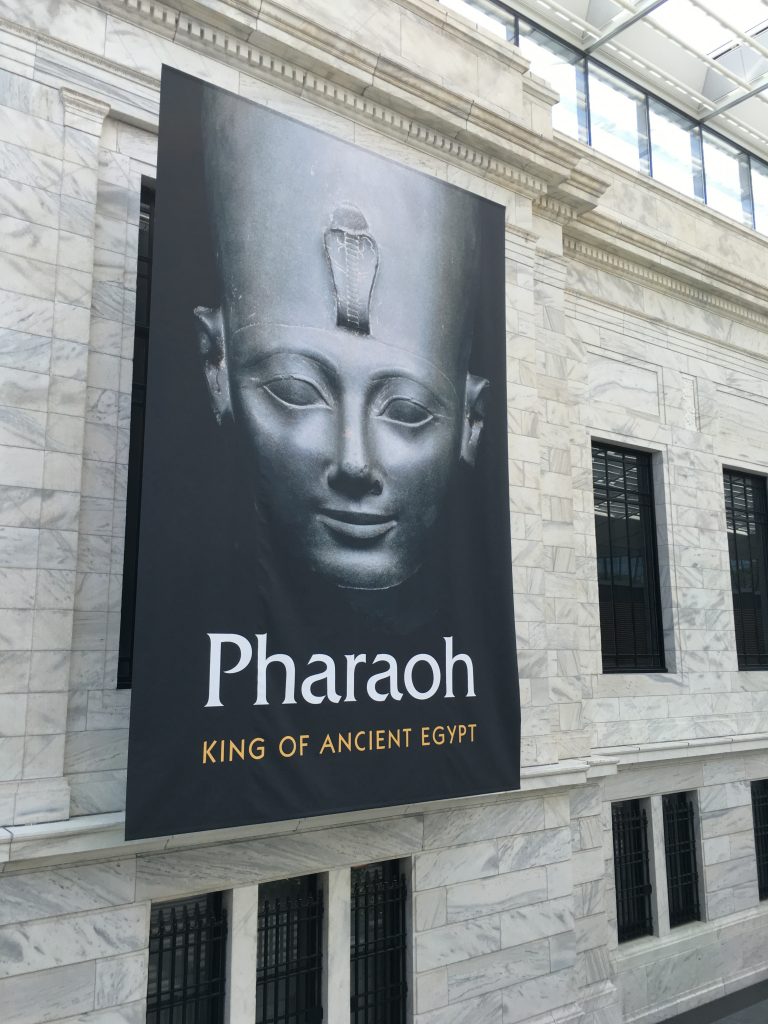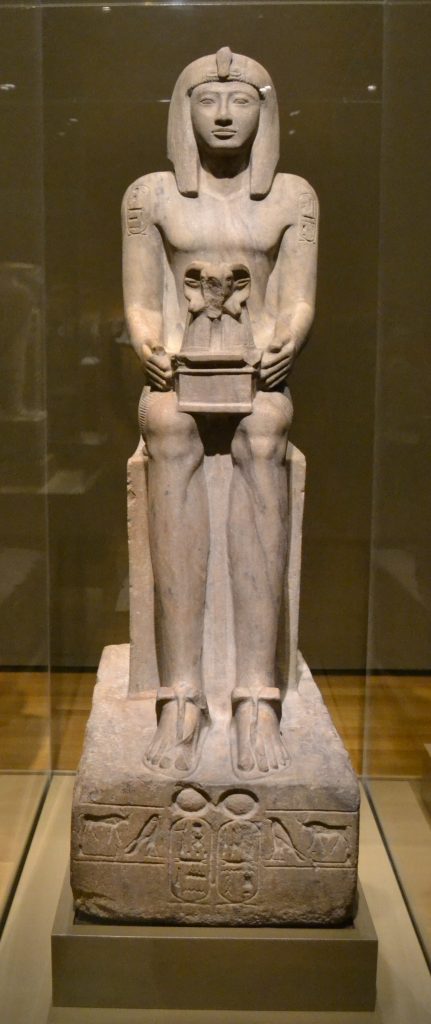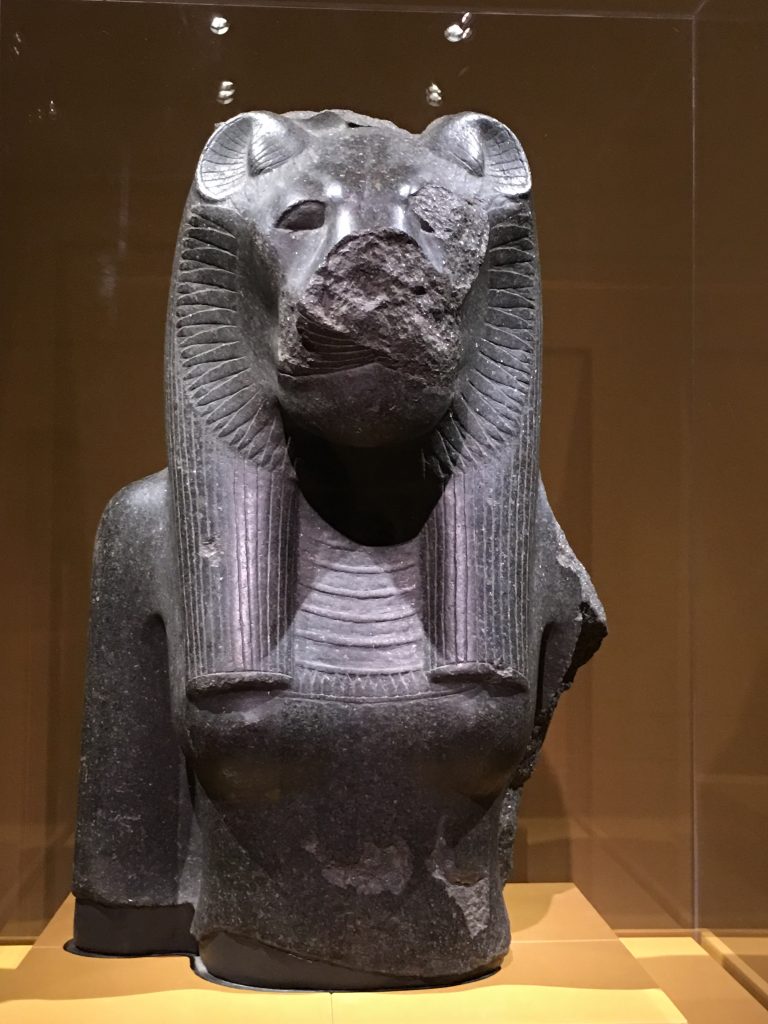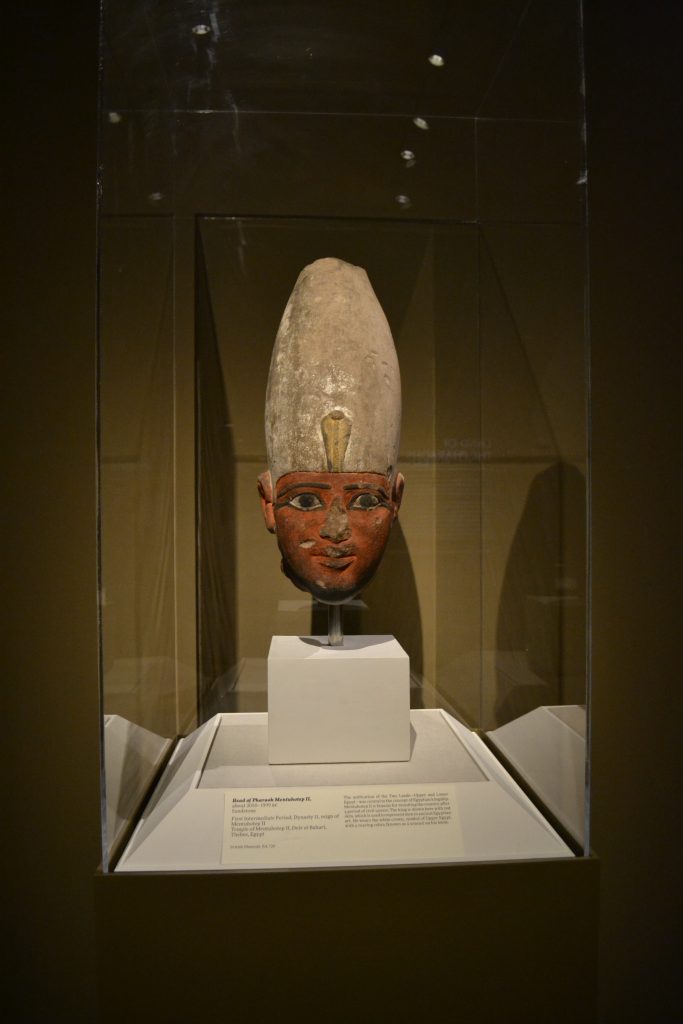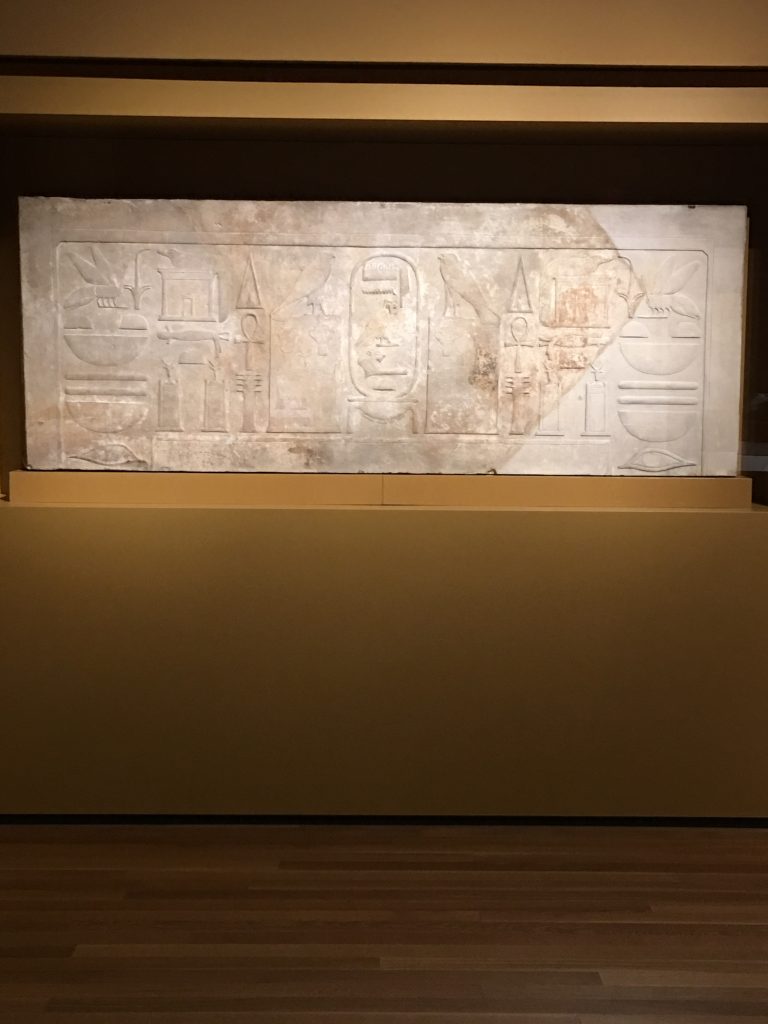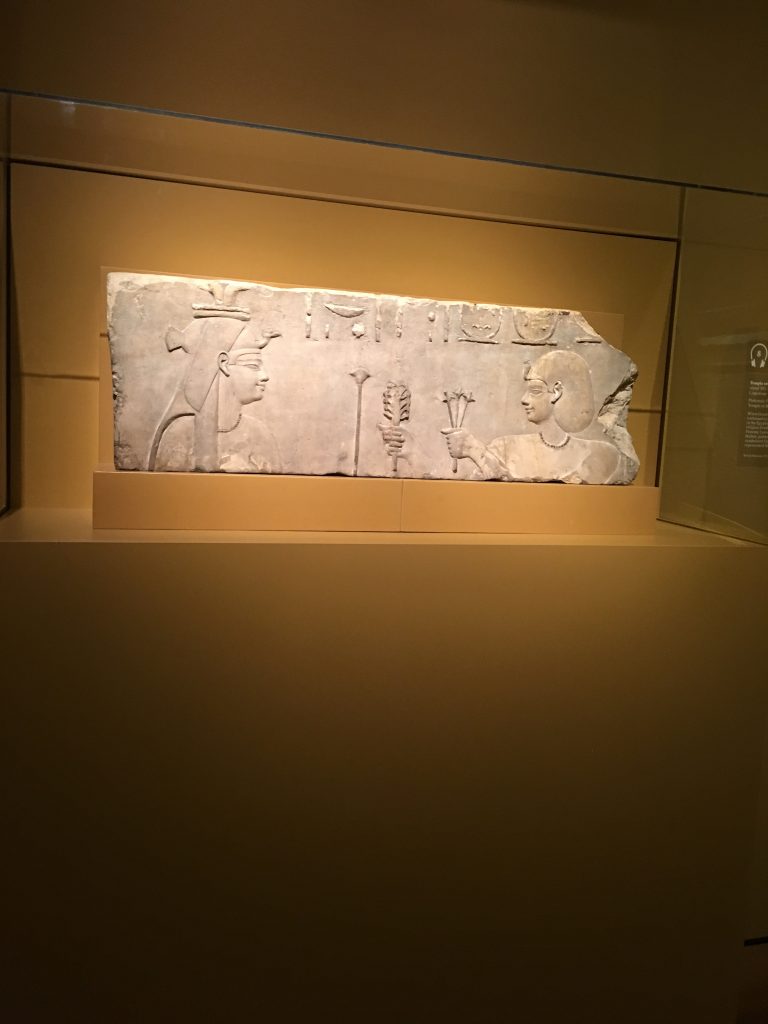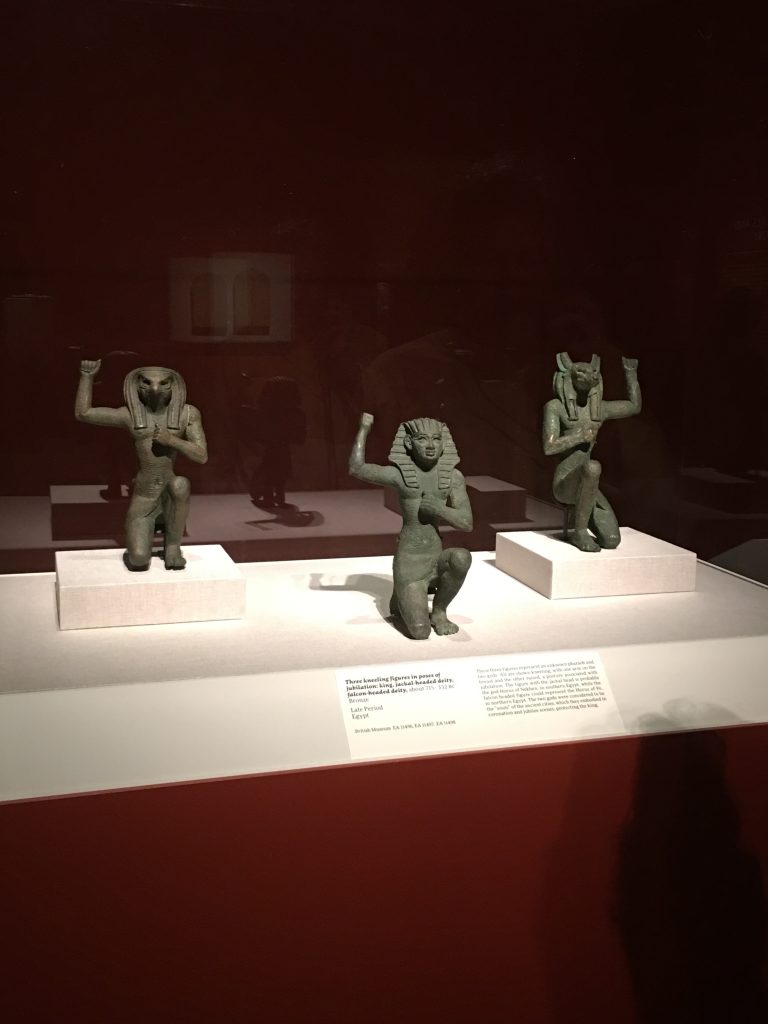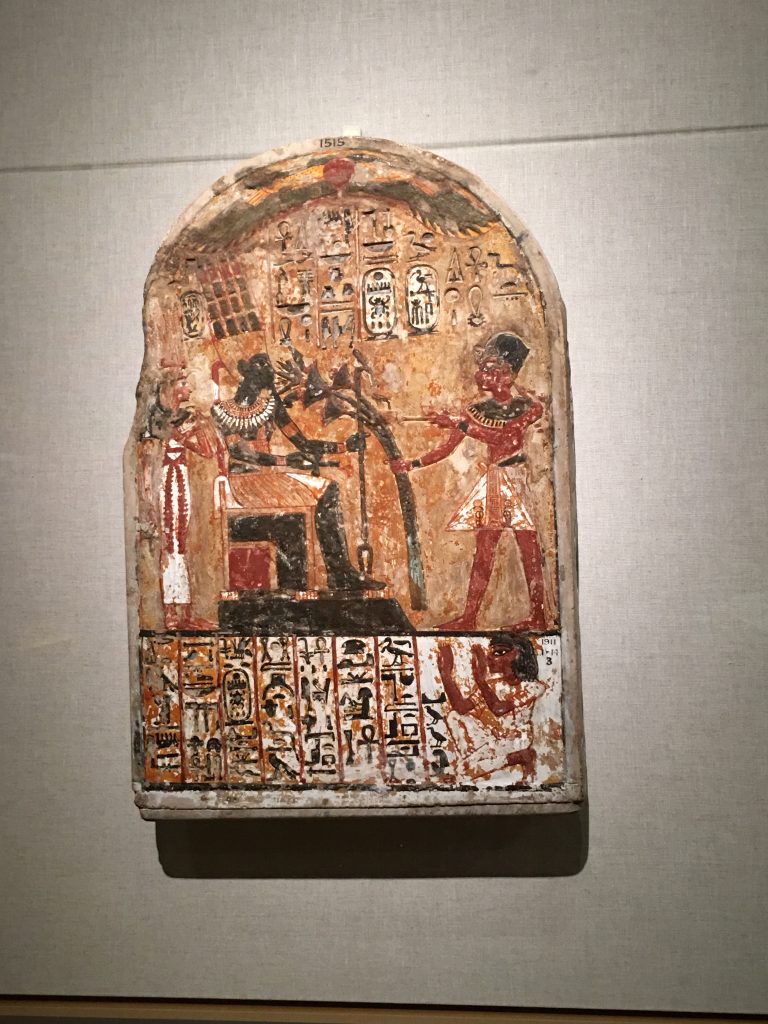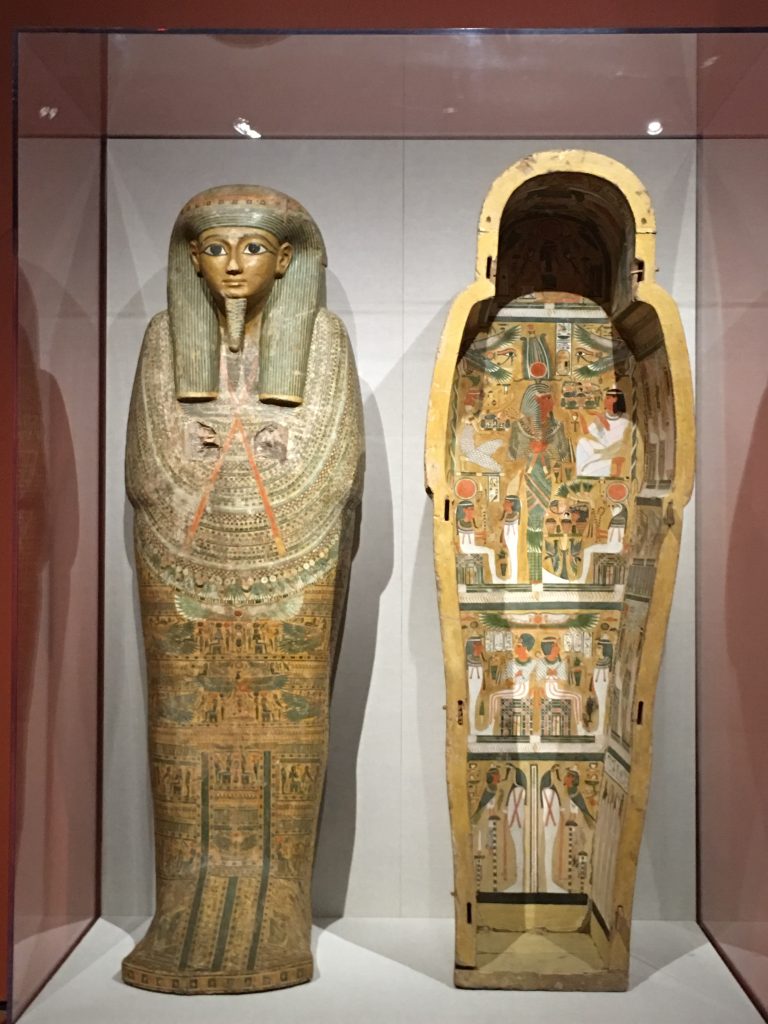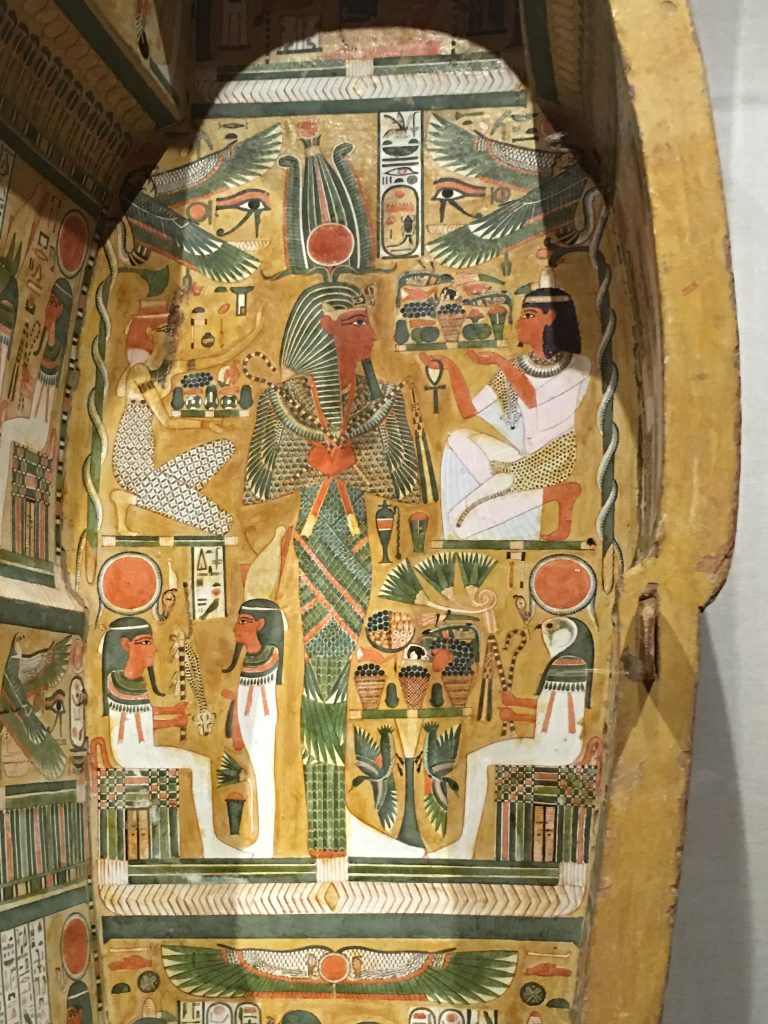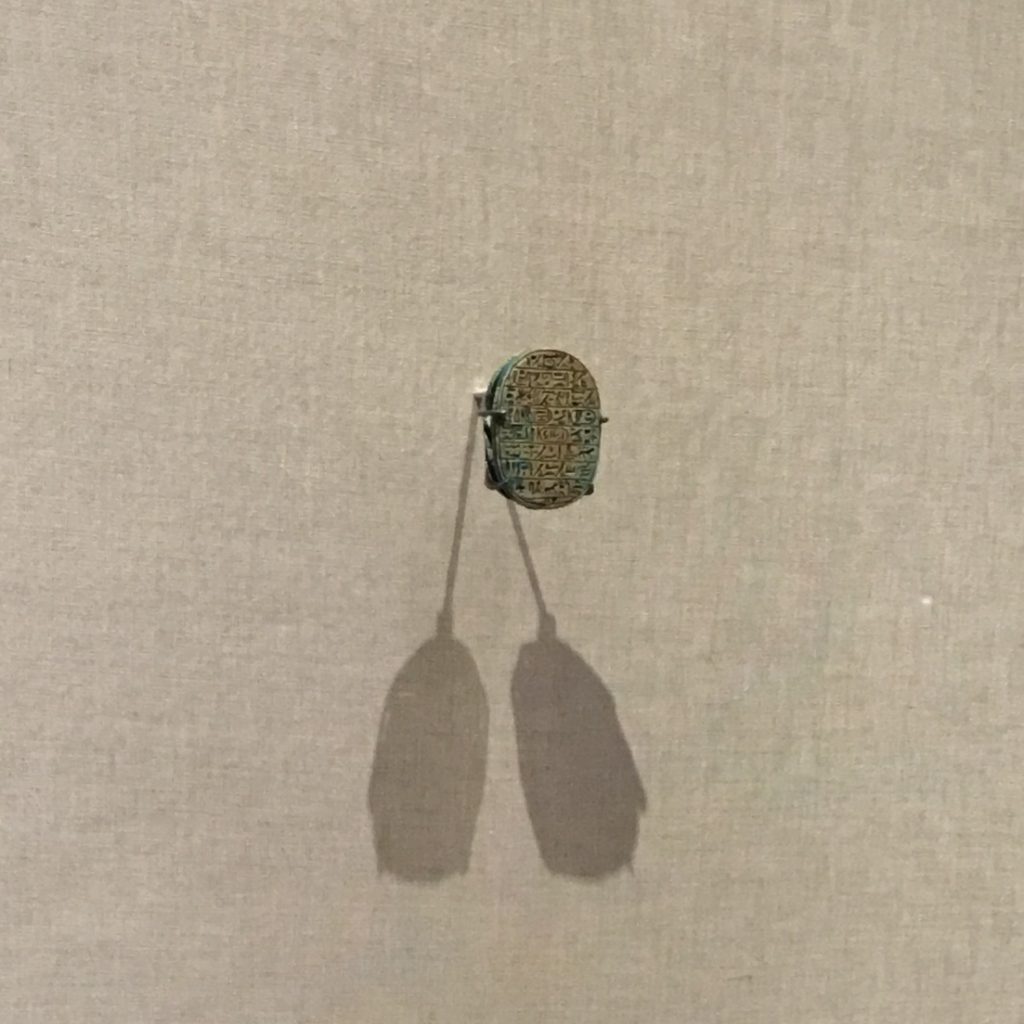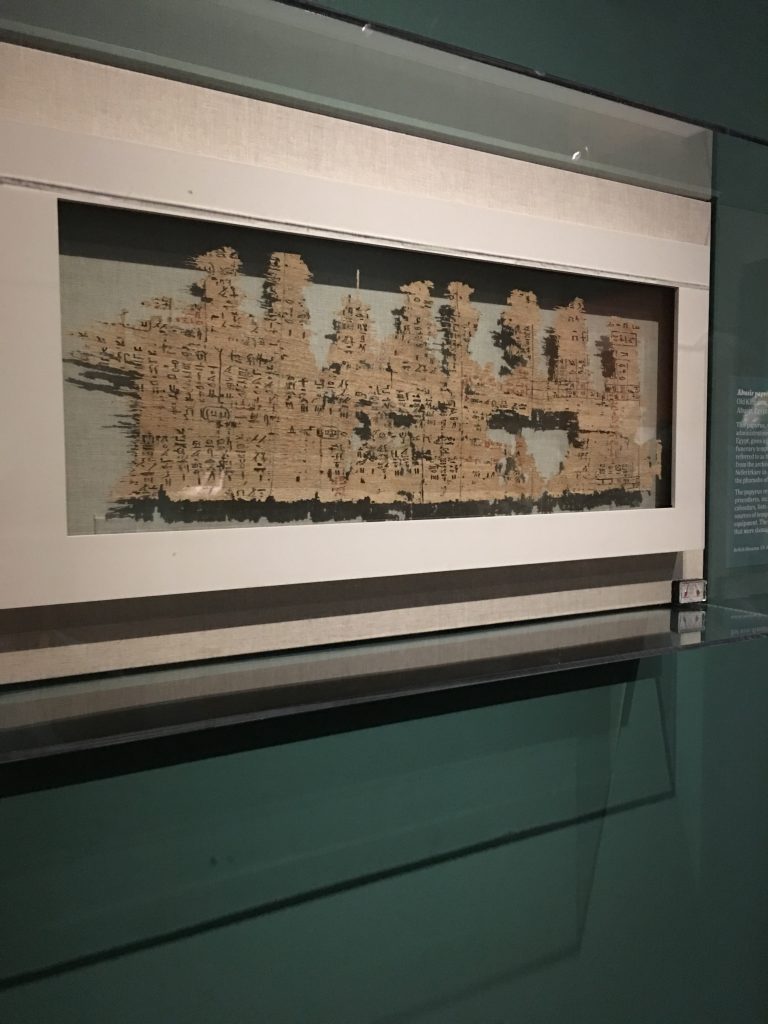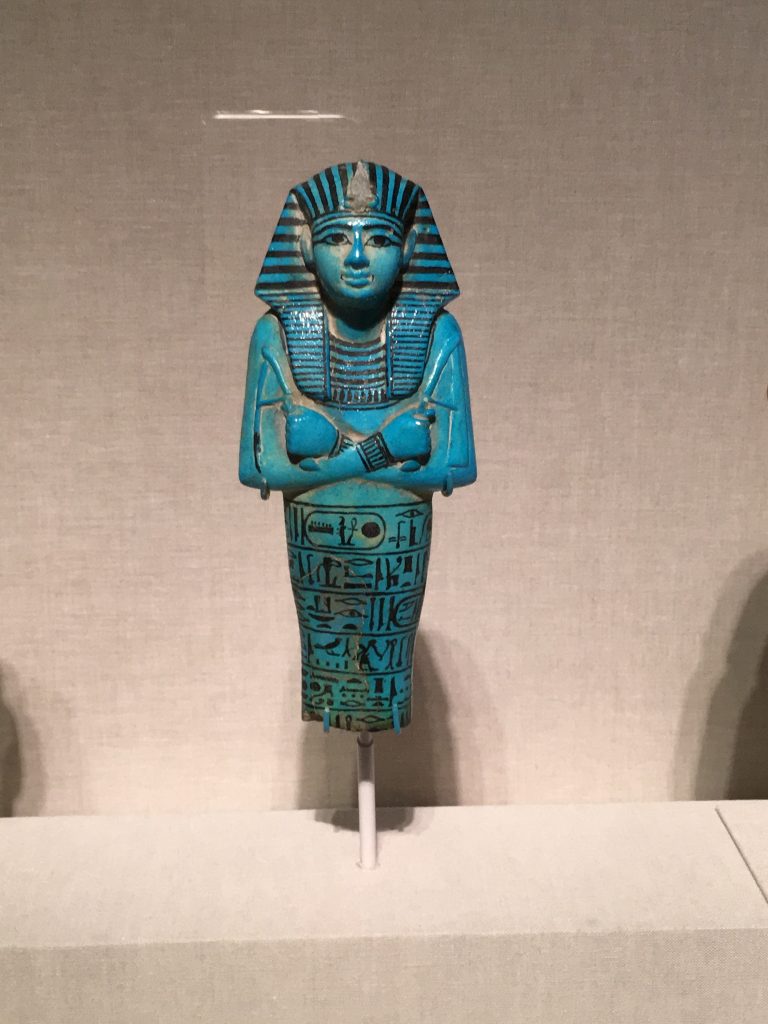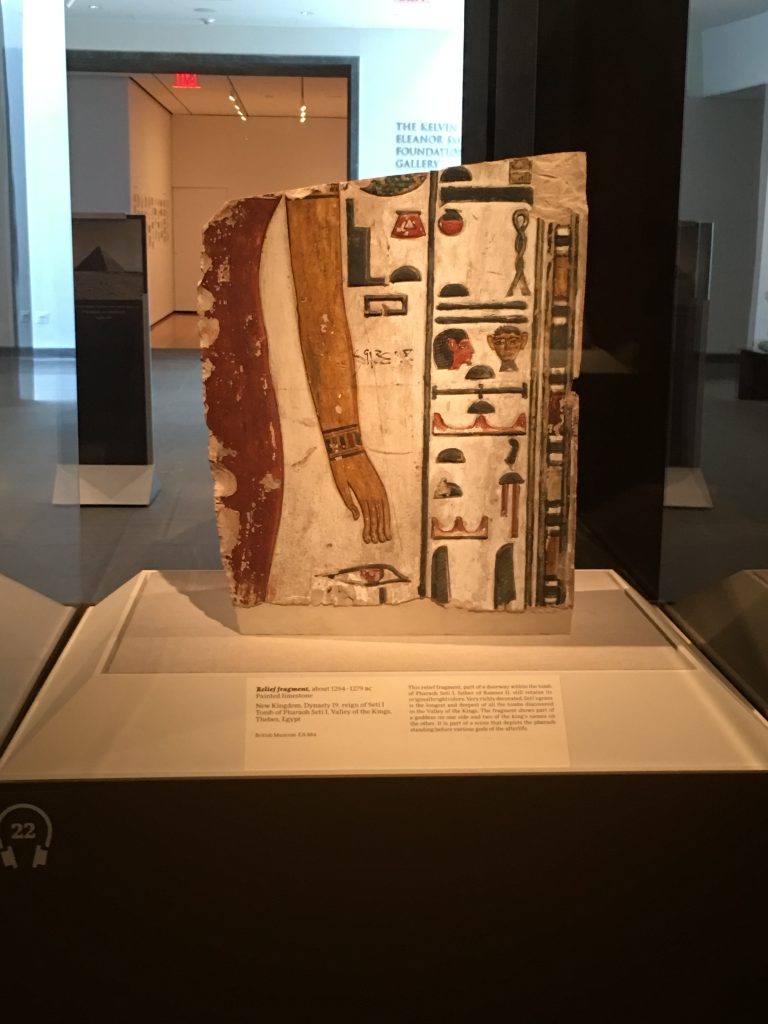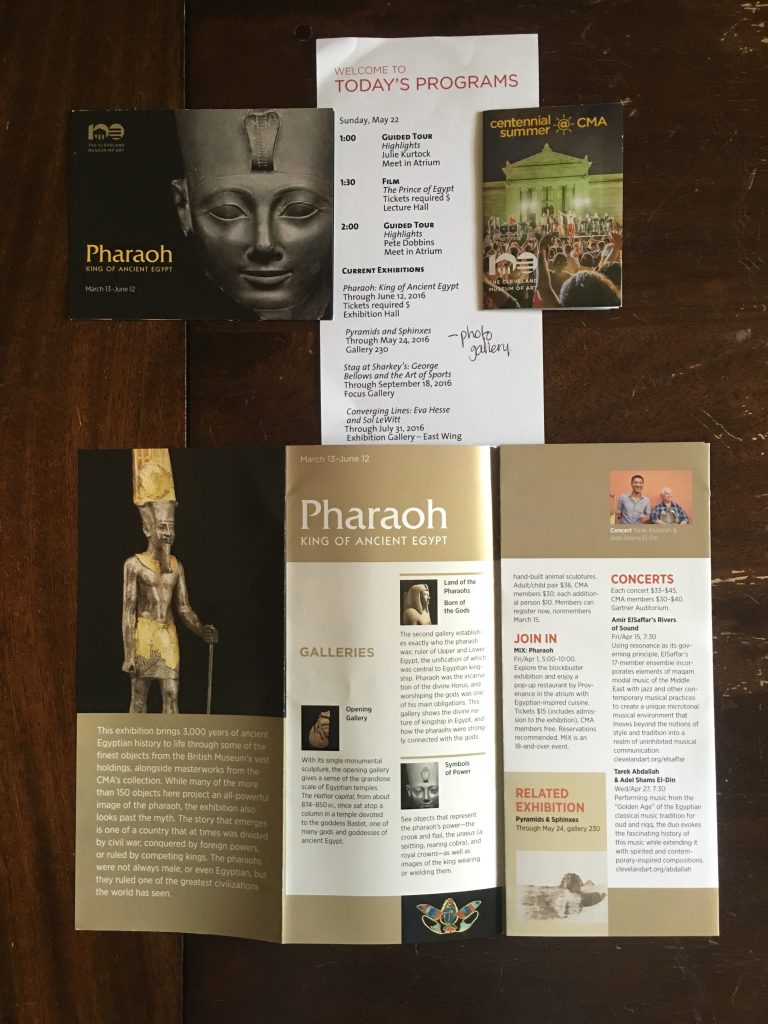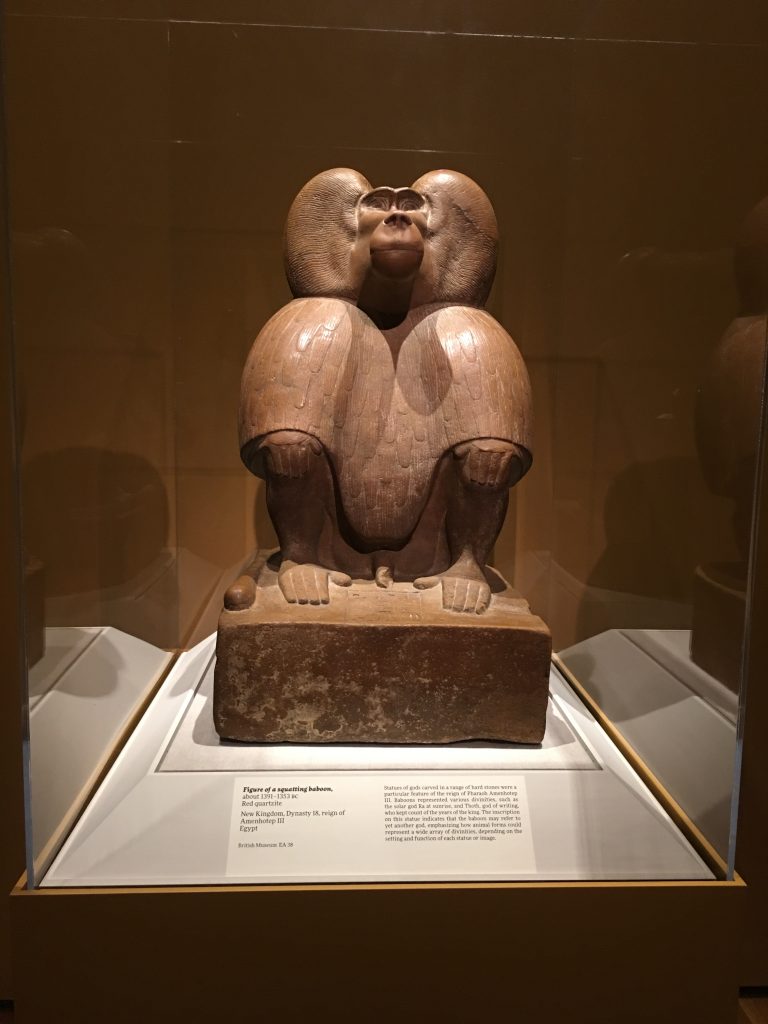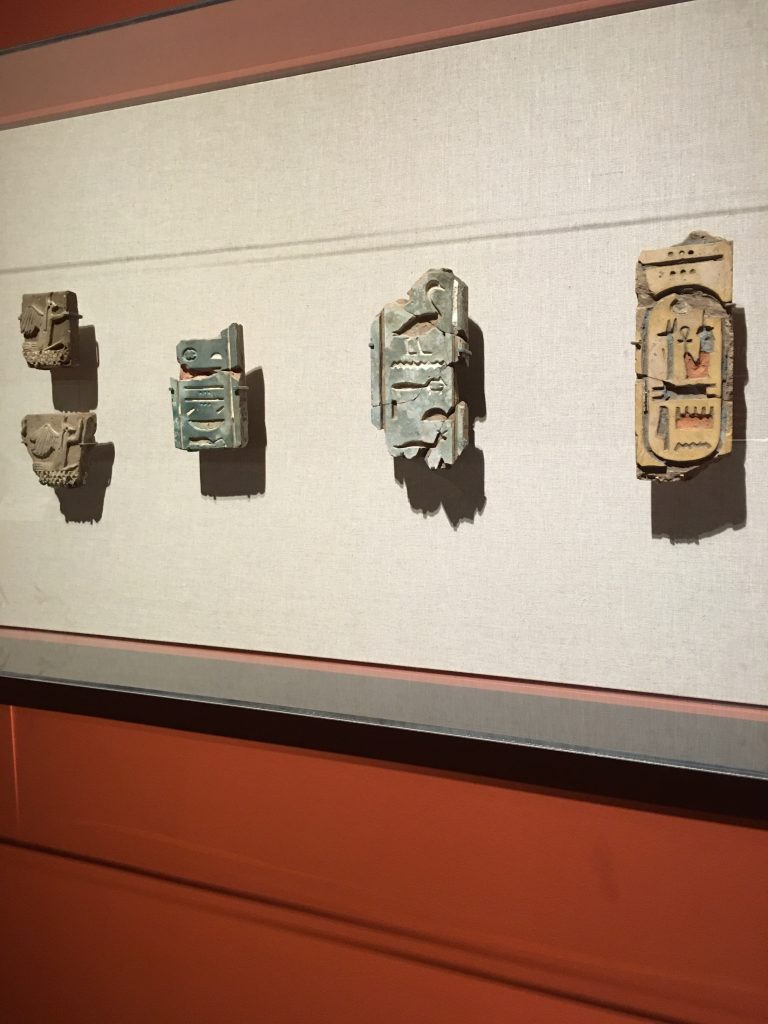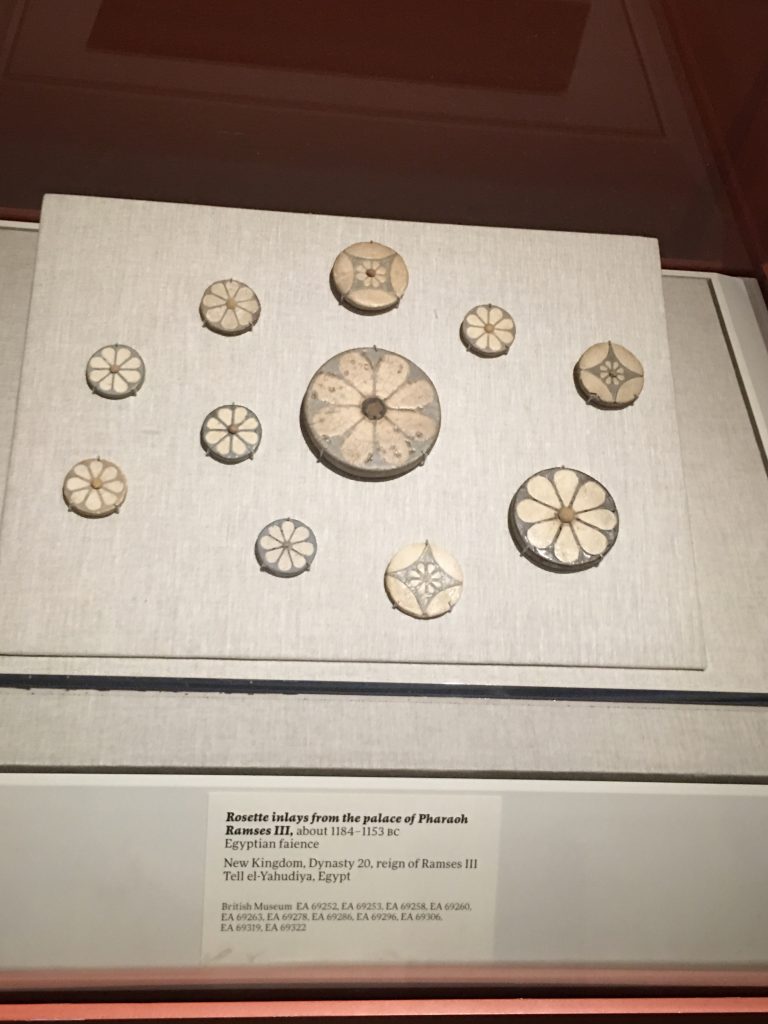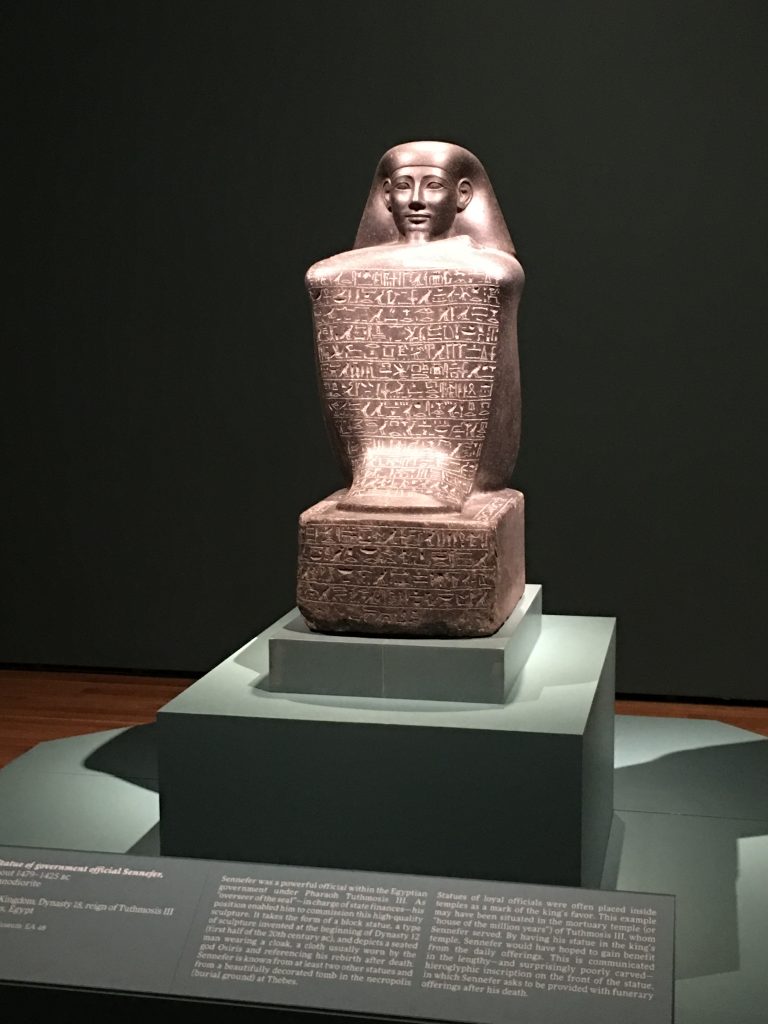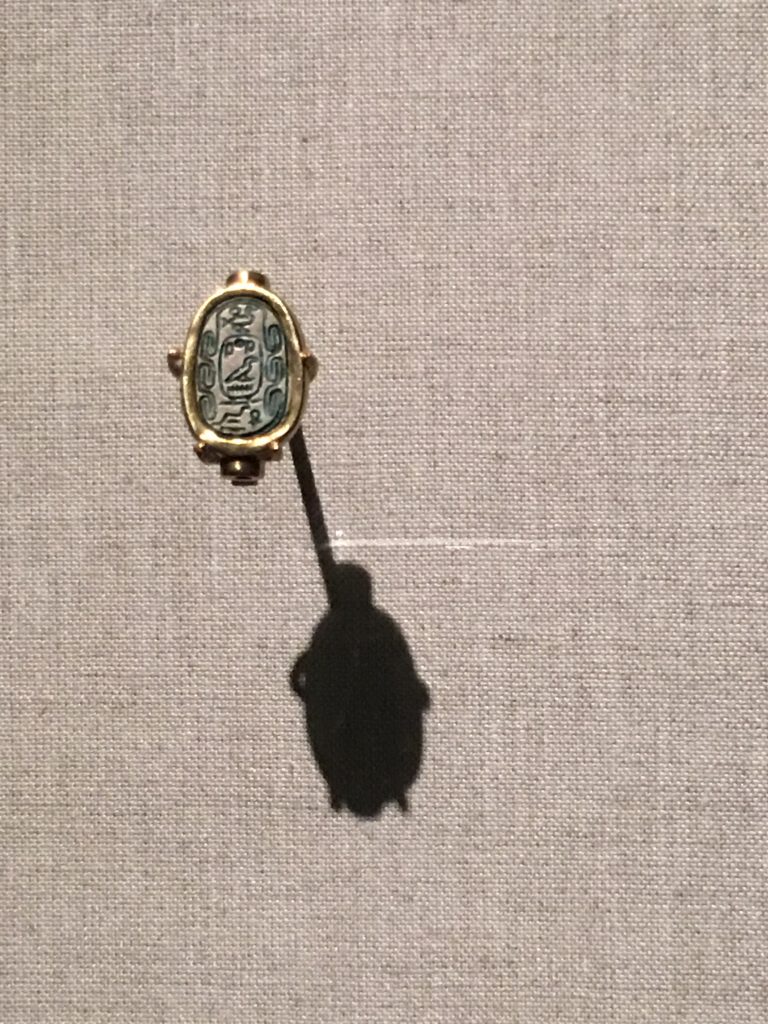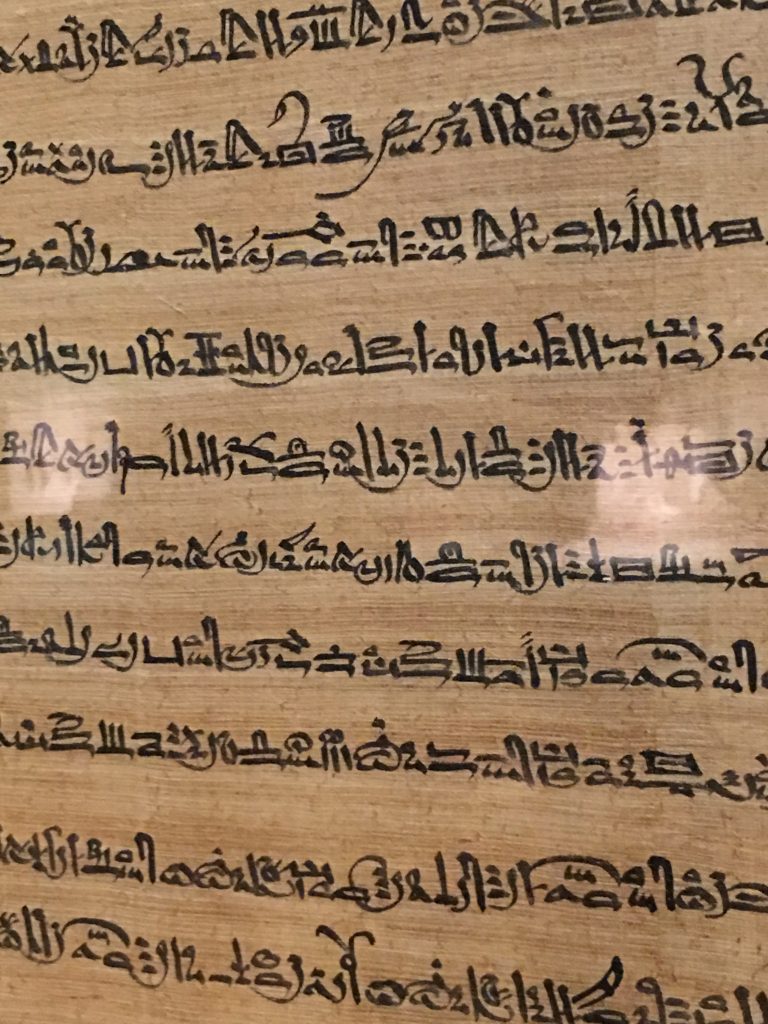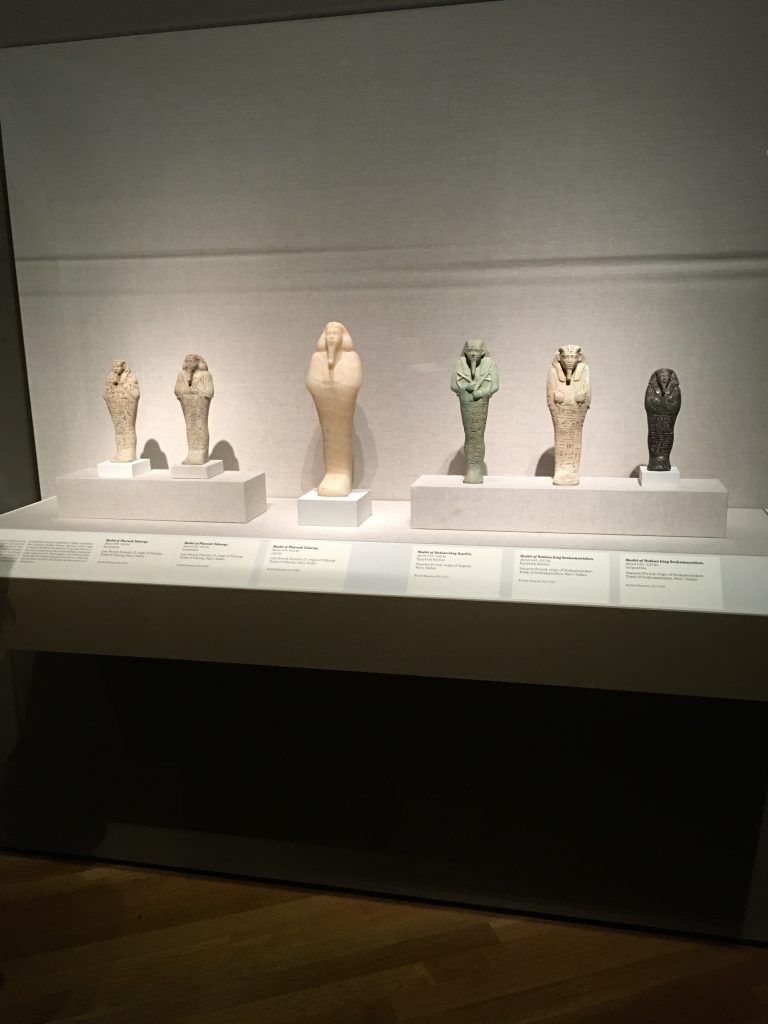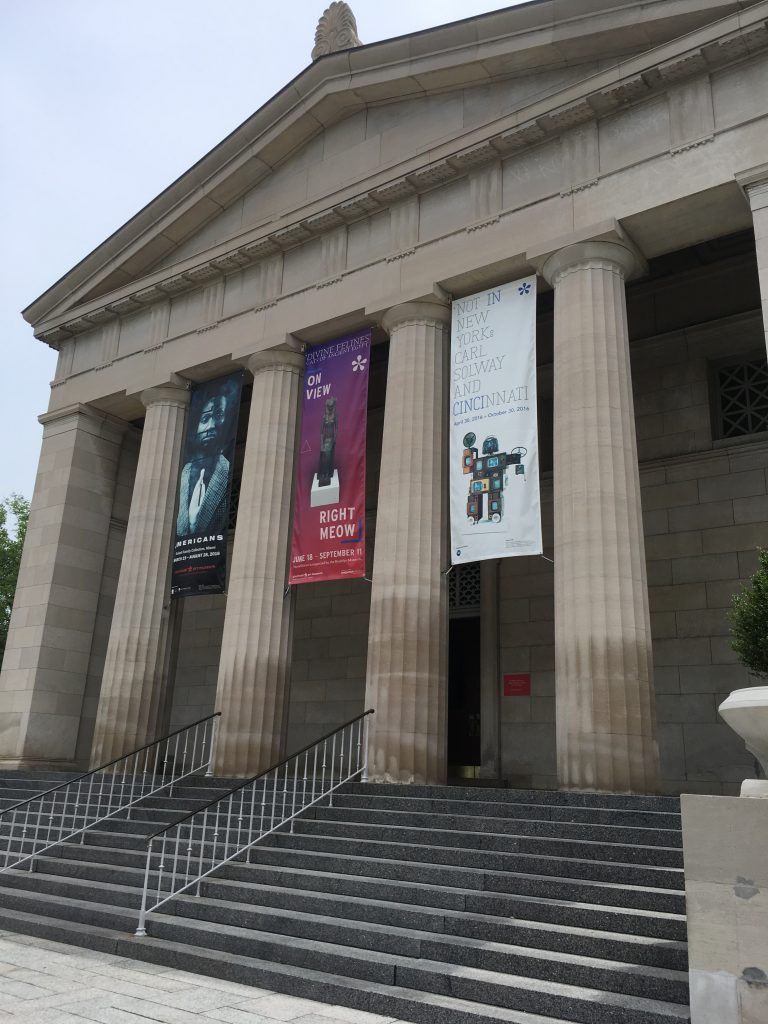
Having just visited the Pharaoh Exhibit at the Cleveland Museum of Art, I was excited to learn that the Cincinnati Art Museum would be showcasing their own Egyptian display titled “Divine Felines”. Presenting artifacts from Egypt with a cat theme, I could not wait to make the trek down to Cincinnati to learn more about the ancient domestication of my favorite animal.
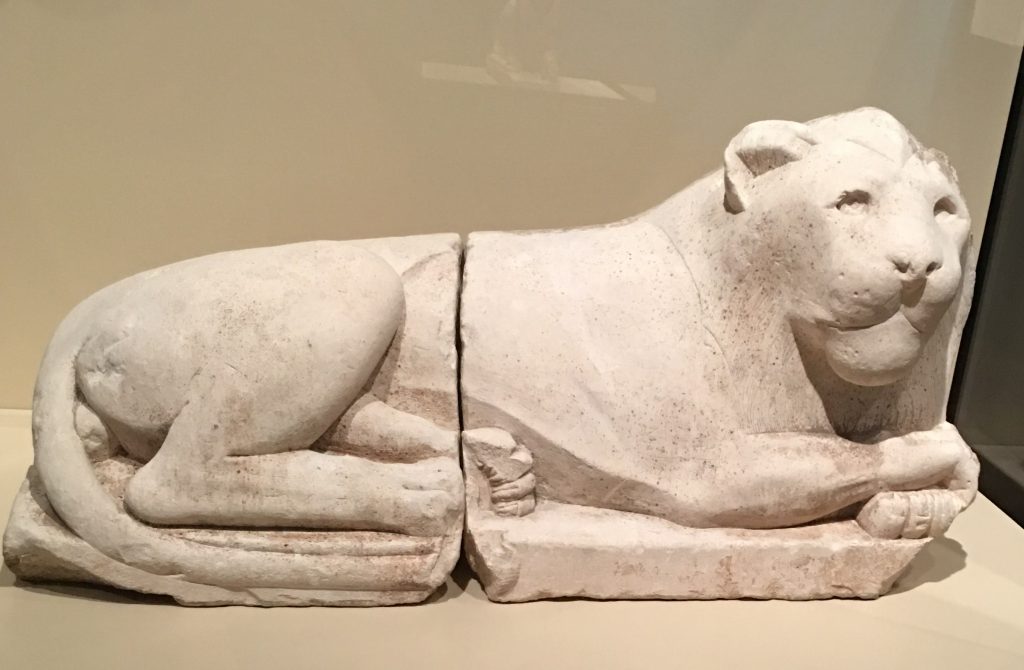
Recumbent Lion, Ptolomaic Period, 305 – 35BC, Reportedly from Giza
Cats, both domestic and wild, played an important role in the every day lives of the ancient Egyptians representing symbols of protection, fertility, beauty and sexuality. For example, the resting lion symbolized the country’s tranquility as well as the confidence and power of the king. Stones or glass were embedded into the eyes of the sculptures to show the watchful nature of the mysterious feline.
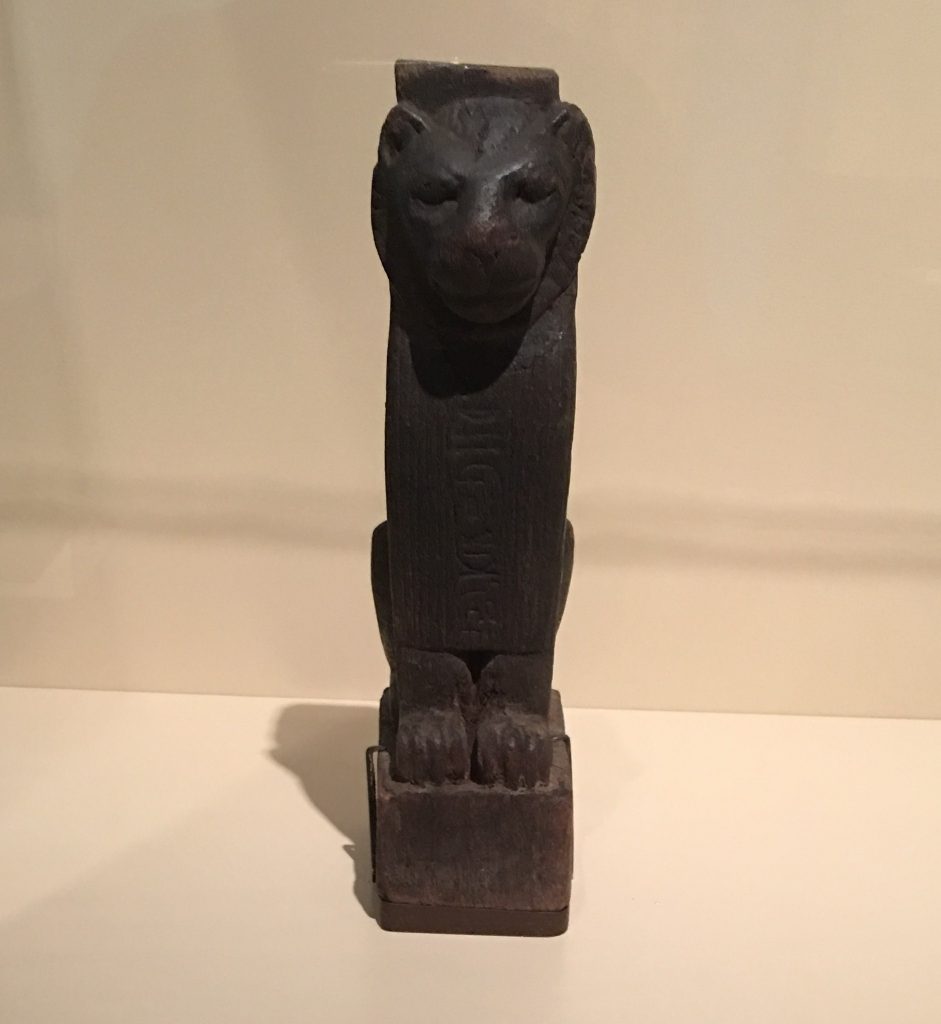
Lion shaped furniture leg, during the reign of Aspelta, 690-664 BC
According to archaeologists, the ancient Egyptians were the first to use the image of cats as elements of architectural design. Cats and lions were found carved in items that were used on a daily basis to include furniture, weapons and cosmetic items.
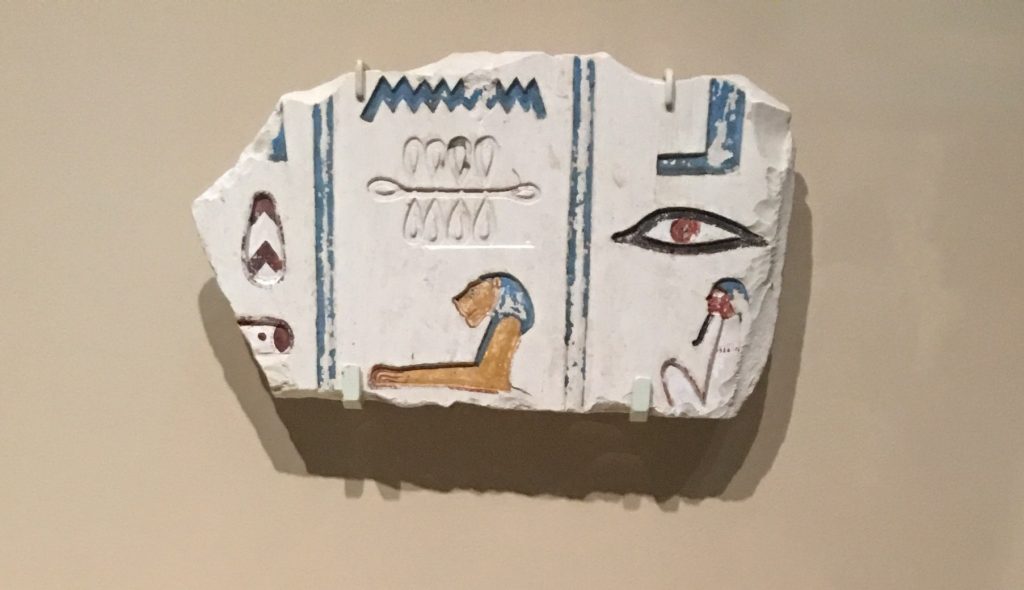
Fragmentary Inscription, Dynasty 25 – Dynasty 26, 670 – 650 BC
Pictures and paintings of lions were a common theme in Egyptian hieroglyphs. At least four images of lions were utilized as one of many animal shapes represented in hieroglyphic designs. These shapes include the standing lion, recumbent lion, full-bodied lion, the forepart lion which included its front legs and head as well as the hind parts of the lion (its legs and tail).
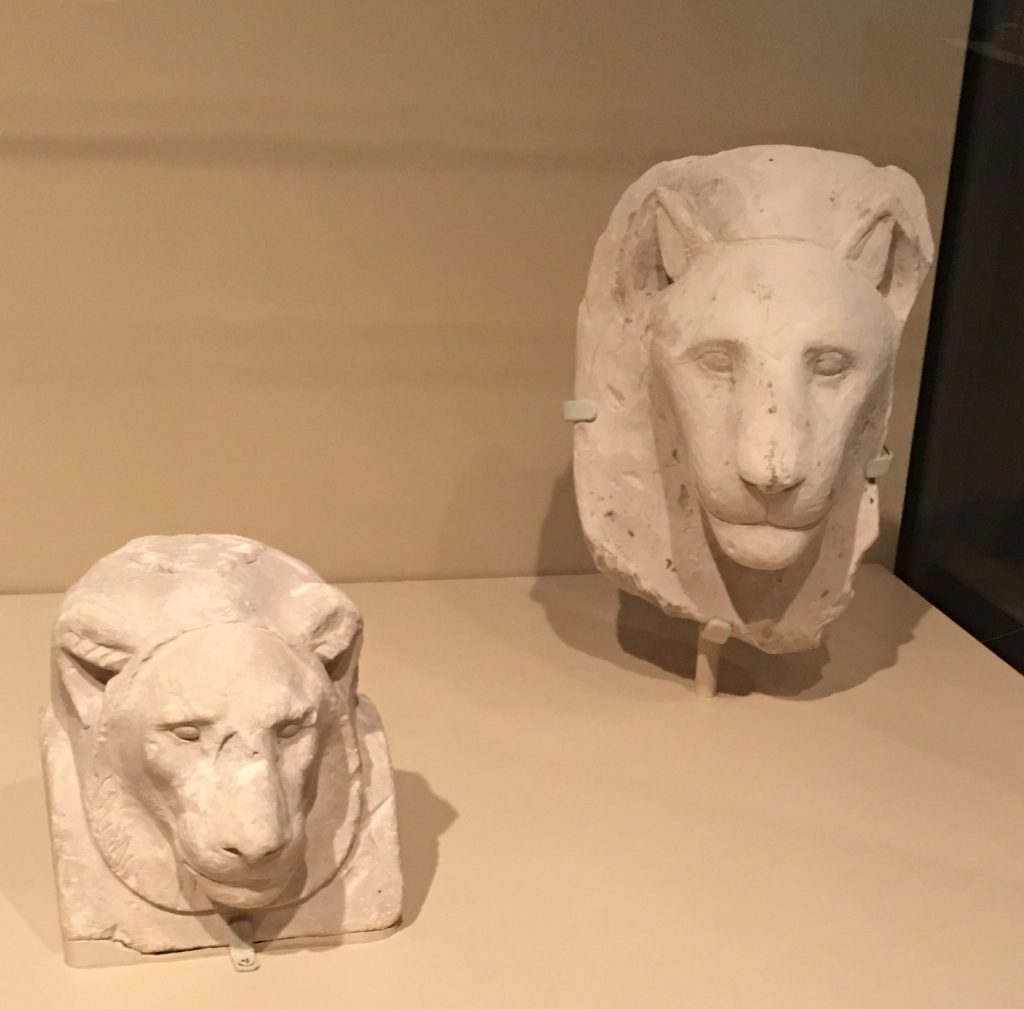
Sculptor’s Model Bust of a Lion, Ptolomaic Period
The Egyptians were fascinated by the prowess of the lions, their ferocity and ability to move quickly. Considered positive qualities that were often used to describe Egyptian gods and Pharaohs, these characteristics were the primary attributes that symbolized their divinity and royal standing.
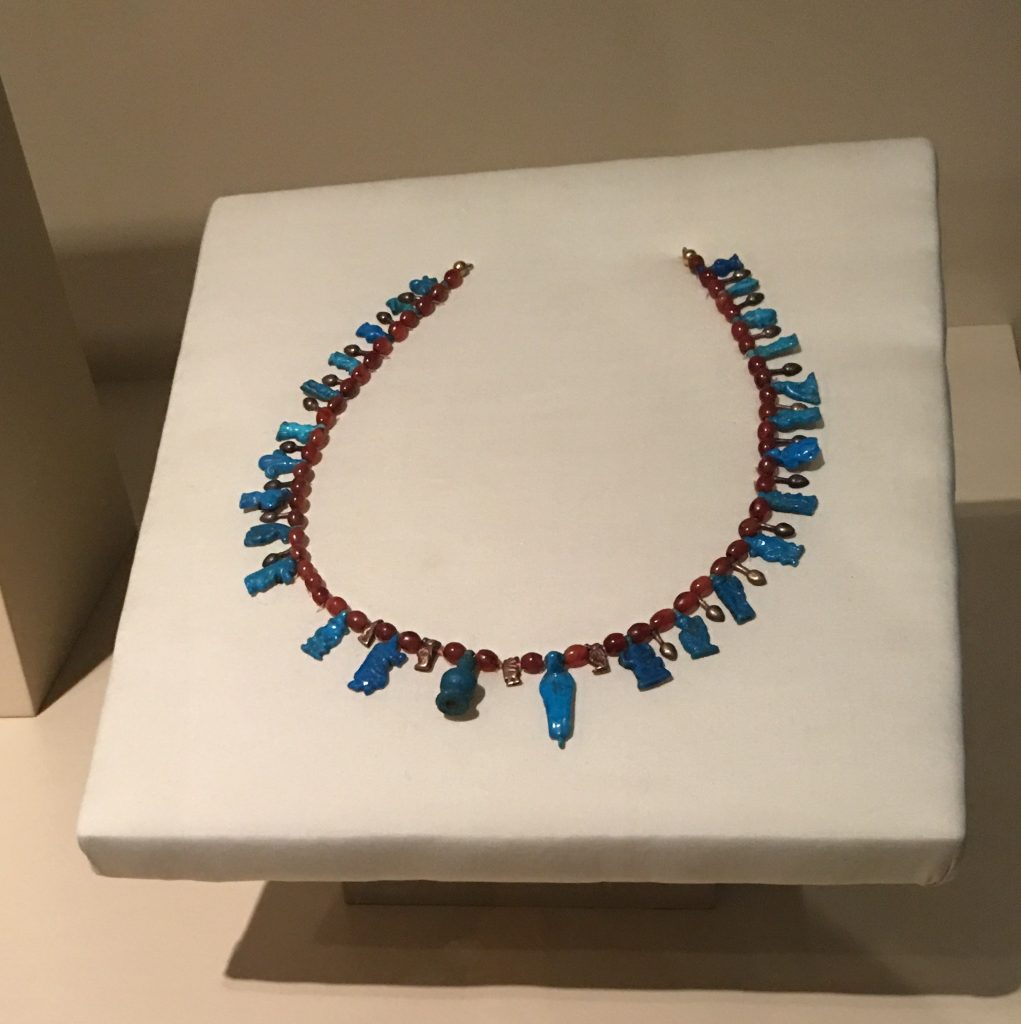
Necklace with Bes and Taweret Pendants, Dynasty 18, 1539 – 1292 BC
Jewels made into the likeness of Bes, the goddess of fertility and protection, were worn by women of child-bearing age or during their pregnancy. These trinkets were used to ensure the safe-keeping of the child until birth. Bes was depicted as a man with a lion’s head and tail. The images also took on the form of a lioness or a woman with a lion’s head, representing the daughter of Ra, the Sun god.
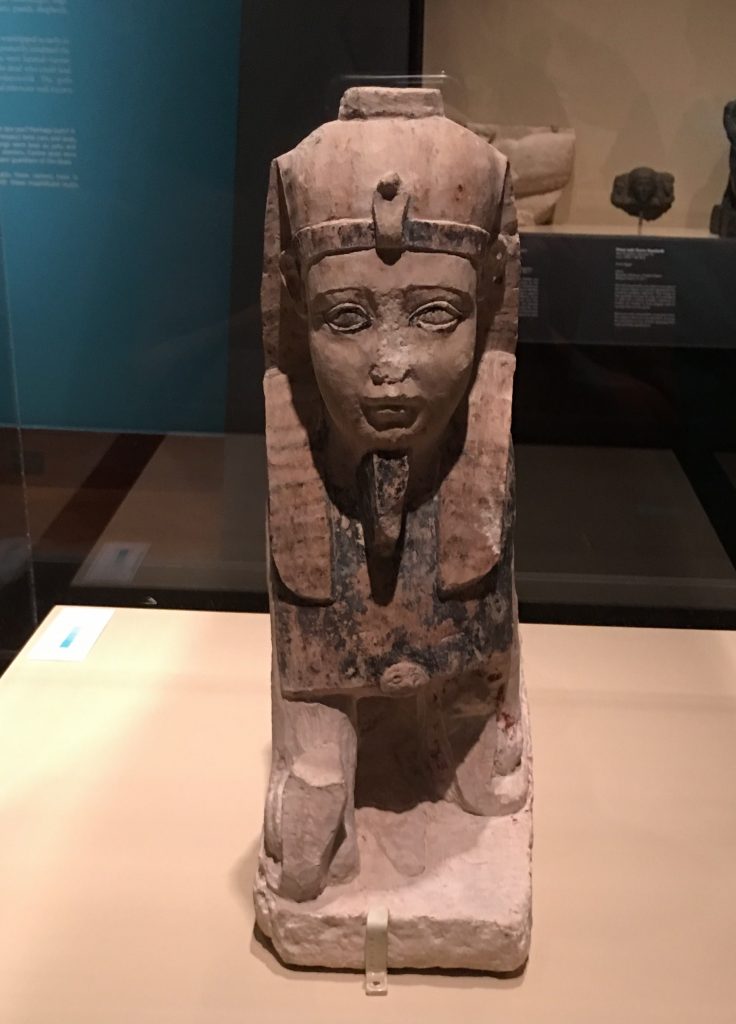
Roman Period, 1st Century Reportedly from Saqqara, Egypt
Tutu was the male equivalent of Bes, taking the form of a pacing sphinx with the tail of a snake. He was known for protecting the dead in the Afterworld and for taking charge of one’s fate.
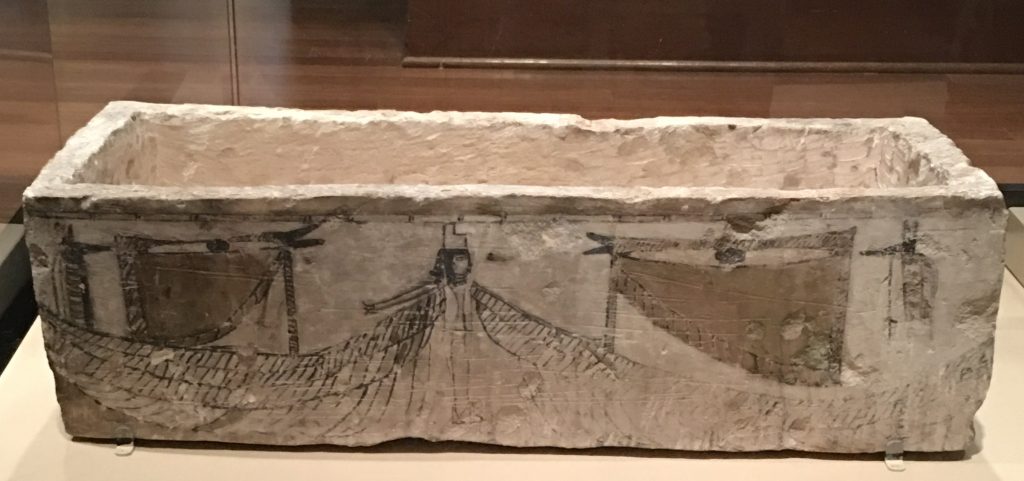
Coffin of a Cat, Late Period, Dynasty 26 – Dynasty 31, 664 BC- 332 BC, or later
The Sarcophagus of a cat mummy showed the importance of cats as pets to the ancient Egyptians. According to the placard, “Most cat mummies were buried in either rectangular or cat shaped coffins made of wood. Carved from costly limestone and decorated with scenes that typically appear on coffins of humans, this sarcophagus may have belonged to a pet cat. A scene on the shorter side to your left shows the deceased cat in front of an offering table, flanked by the goddesses Isis and Nephthys. Isis protectively spreads her wings around one of the longer sides of the sarcophagus.”
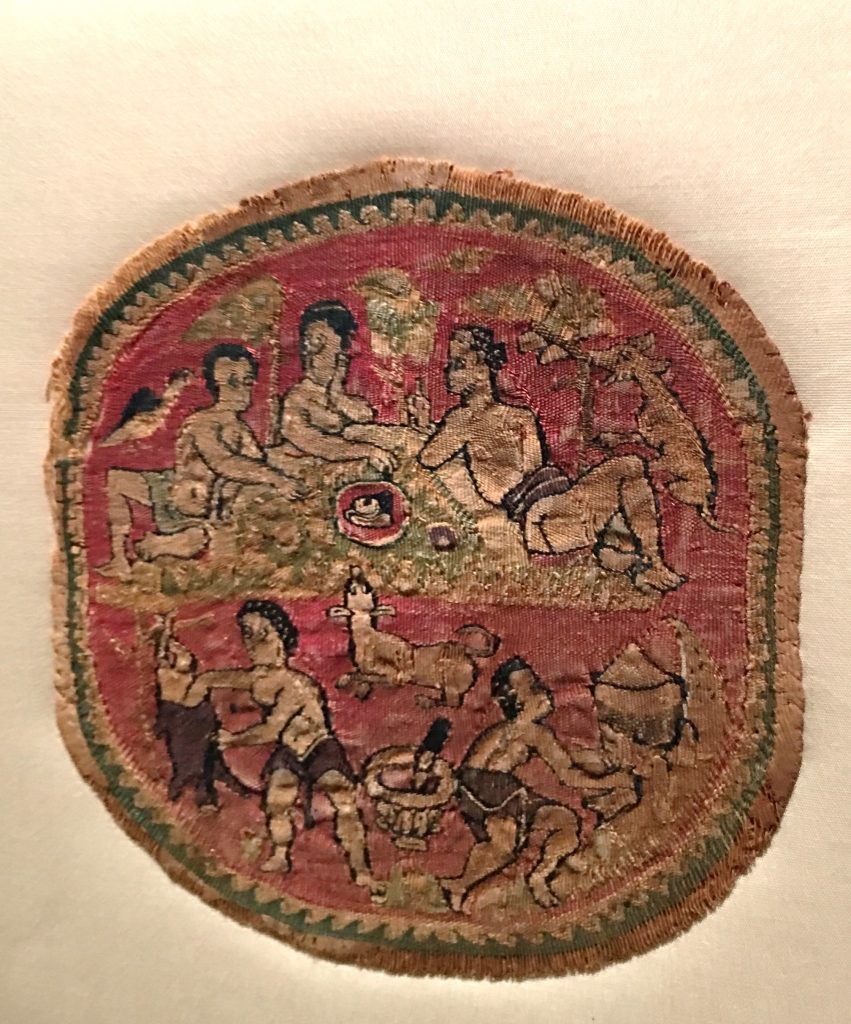
Roundel, 5th Century BC, depicting dogs as pets
Just as cats were highly regarded by the Egyptians as both pets and deities, dogs and jackals also had a place in the lives of the ancient Egyptians. The dog’s ability to protect its territory and their loyalty to their owners were attributes that were important to the rulers. Evidence of dogs as pets can be traced back to the 5th millennium BC.
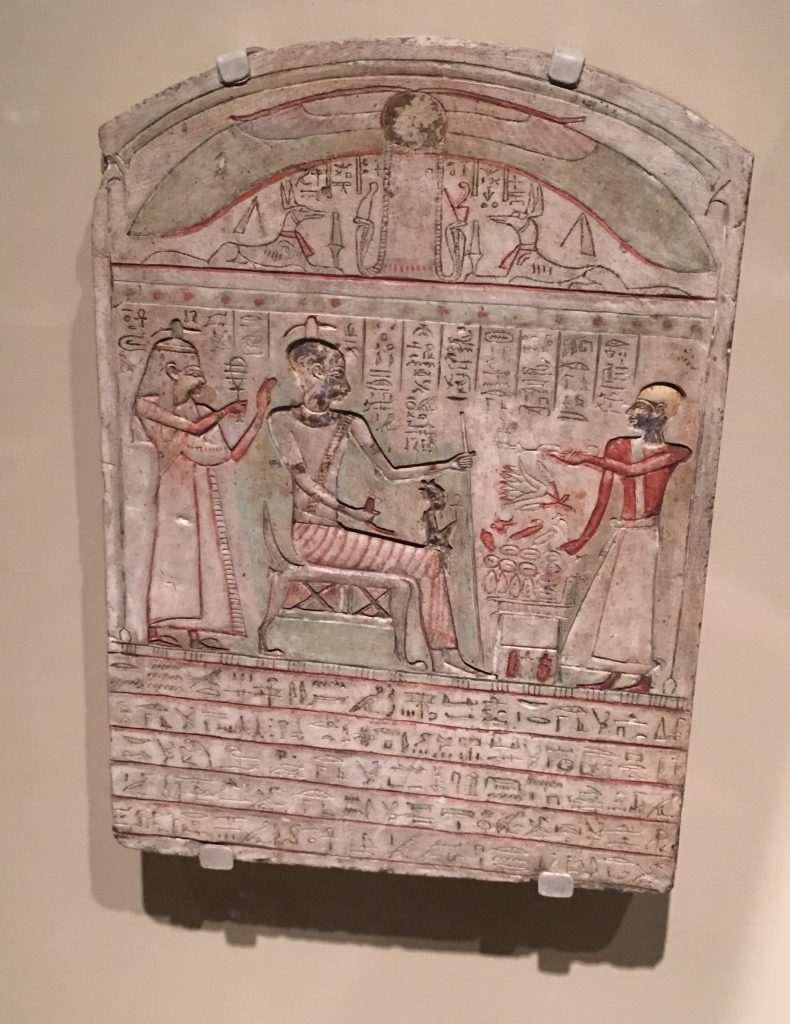
In addition to Tutu, there were several dog deities including Wepwewat, a god that would lead the dead through the passages of the Underworld and provided them protection. The name means “Opener of the Ways” and comes from the dog’s keen sense of smell and its ability to escape danger.
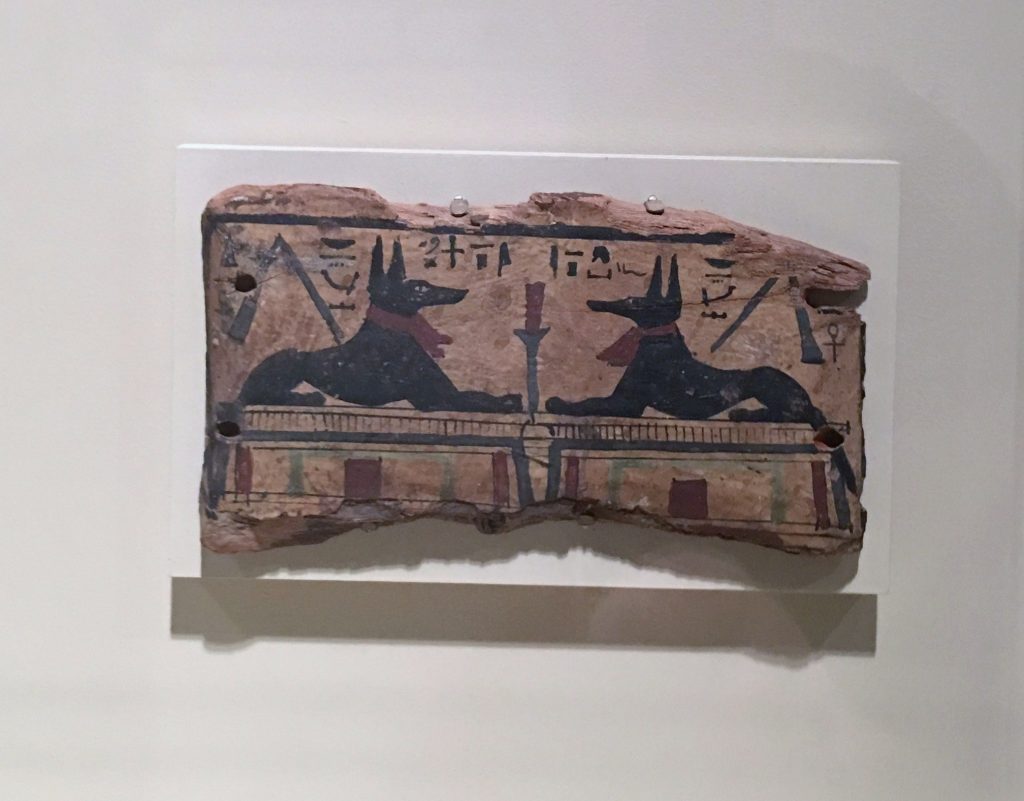
Anubia was another dog deity that was so named due to the dog’s extreme sense of smell. He was responsible for protecting the deceased in the Underworld.
According to the museum, a fragment on display “represents Anubia lying on the top of shrines, coffins, or canopic chests, which were boxes containing jars with the internal organs of the deceased.” It was difficult to determine if the figures were those of dogs or jackals, as both were portrayed as black.
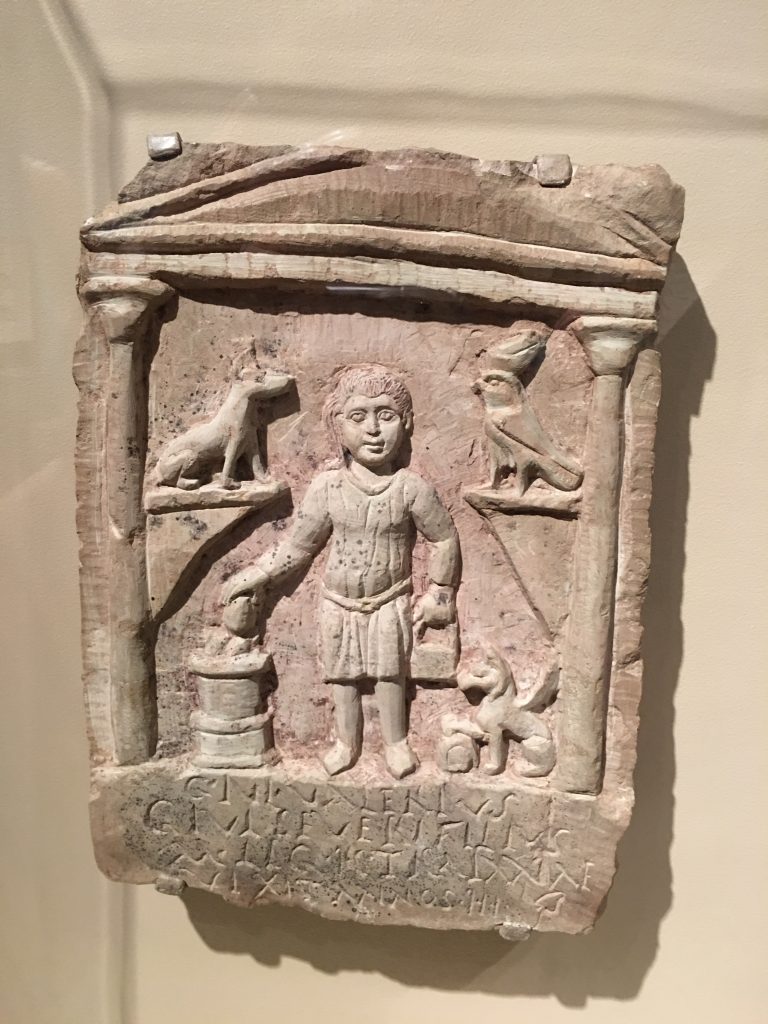
Even as late as the 2nd Century when Rome ruled over Egypt, the influence of Egyptian gods were present in the carvings of the Roman-Egyptian cities. As depicted in the funerary stela of C. Julius Valerius, the Egyptian god Horus and the Roman-Greco god Nemesis were present as well as the dog, representing either Anubis or Wepwawet. Just as in the Egyptian culture, the dog led and guarded the deceased through the Afterworld.
It was not surprising that the characteristics of both cats and dogs were highly admired by the Egyptians. Independent or loyal, swift or sassy, the importance of these furry friends continues even into today’s culture.
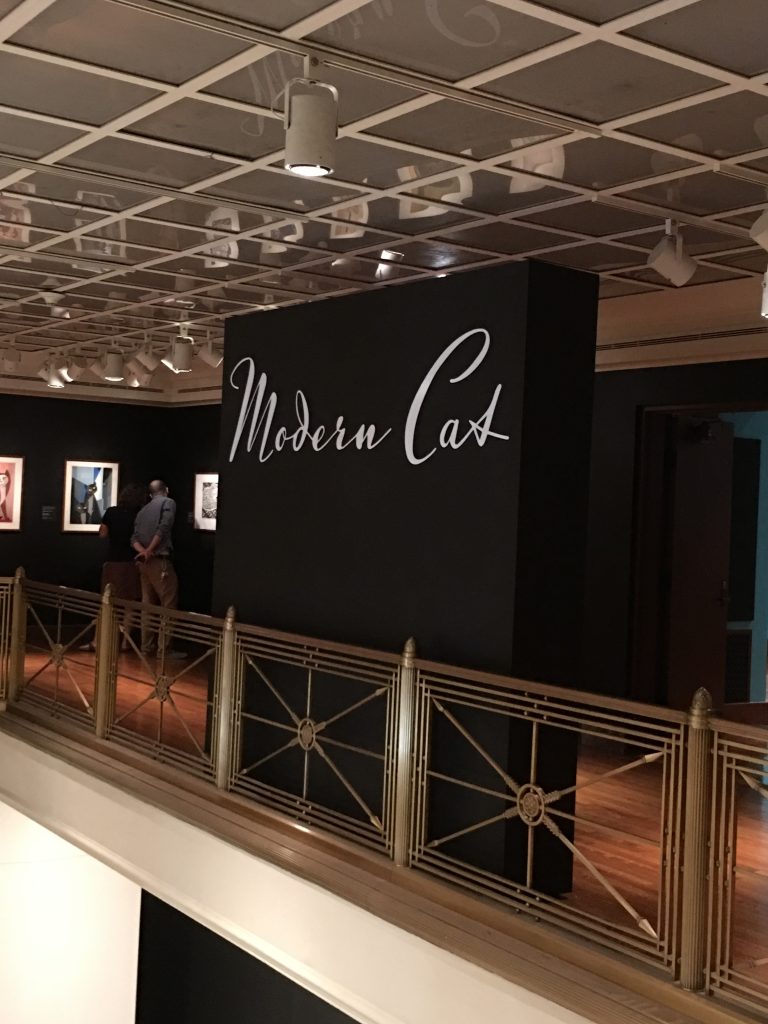
In addition to the Egyptian exhibit, I learned the museum was hosting a “Modern Cats” collection. With over 20 pieces on display, the artwork was added to demonstrate the “lasting appeal of the domestic feline”. I enjoyed exploring the cat-themed pieces proving that even today, cats are an important part of our global culture.
Which attributes of your pet also resemble your character? Are you surprised that the Egyptian culture developed a fondness for cats in their religion and everyday lives? I would love to hear your thoughts if you would kindly leave a message in the comments section below. Many thanks for reading about my visit to the Cincinnati Art Museum to check out the Divine Felines Exhibit. Wishing you many Happy Travels!
What to See and What to Do:
Cincinnati Art Museum
953 Eden Park Drive
Cincinnati, OH 45202
Telephone: 513 721 2787
- Admission Fee: General Admission is Free. Special Event Ticket Pricing is $12 for Adults, $6 for Seniors (60+), Students and Children (6-17) and children under 5 are FREE. Exhibit hours on Thursday from 5 PM- 8 PM is free. Contact the museum’s website for holiday closures.
- Hours: Open Tuesday – Sunday from 11AM to 5PM; Closed Monday and open Thursdays from 11AM to 8PM. Closed on Thanksgiving Day and Christmas Day.
- Amenities: Terrace Cafe, Mary R. Schiff Library, museum shop, Rosenthal Educational Center, gallery map and guides and MyCAM Art Hunts
- Length of Visit: 1 to 2 hours, or additional time for special exhibits
- Tips for Your Visit: Ensure that you have visited the website to confirm that the museum is open, as it may be closed for special events.
Where to Stay:
Millennium Hotel Cincinnati
150 W. 5th Street
Cincinnati, OH 45202
Telephone: 513 352 2100
Where to Eat:
Mt. Adams Bar and Grill
938 Hatch Street
Cincinnati, OH 45202
Telephone: 513 621 3666
I ordered the Fried Jalapeno Ravioli served with marinara sauce.
What to Eat:
- Skyline Chili: My go-to meal at Skyline is the 4-way chili with onion served with oyster crackers and hot sauce. I always pick up two York peppermint patties after cashing out. Cincinnati chili is a beef based sauce served over spaghetti noodles and cheese. Additional toppings include onions and beans.
- LaRosa’s Pizza: A local chain pizzeria, this Sicilian style pie is made with a sweet crust and sauce. My favorite menu item is the Caprese pesto Flatbread Pizza.
- Graeter’s Ice Cream: It’s the French Pot process that makes Graeter’s Ice Cream so decadent and rich. Towards the end of the process, they pour chocolate into the mix creating large chunks of yummy goodness.
- Montgomery Inn BBQ: Visiting the original Montgomery Inn BBQ at the boathouse is a culinary and scenic experience. Their ribs are served with a sweet and tangy sauce that has since made them the “Ribs King” and a favorite among locals. Load up on their amazing BBQ flavored Saratoga chips,
- Glier’s Goetta: While it looks like a slab of corn beef hash, this breakfast staple is made of sausage and oats, cooked until crispy. Most breakfast restaurants carry it as a side, especially the local cafes and diners.
- BonBonerie: One of the most decadent pastry shops in Cincinnati, their rich confections are absolutely amazing.
Where to Drink:
Moerlein Lager House
115 Joe Nuxhall Way
Cincinnati, OH 45202
Telephone: 513 421 2337
Books to Read:
- Eligible: A Modern Retelling of Pride & Prejudice, by Curtis Sittenfeld
- Running, by J.T. Cooper
- Dead Witch Walking, by Kim Harrison
- Beloved, by Toni Morrison
- Double Dutch, by Sharon M. Draper
- Romiette and Julio, by Sharon M. Draper
Photo Guide for Cincinnati (as provided by Chris Thompson on FourSquare):
- The John A Roebling Suspension Bridge
- Pick a spot near the Covington pier and shoot north toward the Cincinnati skyline. Shoot at sunset and underexpose by a few stops to get the lights just right.
- The new lights on the bridge create excellent stars when you photograph them using a narrow aperture (~f/16 and above) on your camera. That means you’ll need a longer exposure (and thus a tripod).
- General James Taylor Park
- Shoot from the top of the flag pole mound to get more building reflections in your shot. Shoot at sunset or sunrise for great lighting.
- Cincinnati Museum Center at Union Terminal
- Arrive first thing in the morning when the sun is coming up
- The Fountain at Fountain Square
- For great photos of the fountain: set your camera on a tripod and use a long exposure (2-5 seconds) to capture the running water. Get Carew or the colored lights above Rock Bottom in the background.
- Fountain Square (look for reflections in puddles)
- Celestial Restaurant in Mount Adams – The restaurant is now closed, but you may still be able to use the parking lot.
- Carew Tower Observation Deck
- Provides some neat photos of the highways snaking around the city. Set your camera on a tripod and use a long exposure to get moving car trails. It’s only open at sunset a few days each year.
- Engine Company 46, 2733 Erie Avenue (at Michigan), Cincinnati
- One of the most beautiful historic firehouses in all of Cincinnati. The firefighters here are used to having their photo taken while they work. Ask nicely and you can get some cool shots.
- Cincinnati Observatory Center
- Krohn Conservatory
- Great American Ball Park
- Shoot the front of the stadium around sunset to get a nice color blue in the sky. Get one of the player statues in your shot for extra effect.
- Devou Park
- The overlook next to the Drees pavilion affords a great view of the Cincinnati skyline. Shoot at sunrise or sunset for the best lighting. Underexpose slightly to get the city lights just right.
- Newport Central Catholic for fireworks
- Shoot the Riverfest fireworks from this location. Bring a long lens and a tripod. You’ll want a long-ish exposure (5-10 seconds) to capture the bursts, but make sure the skyline isn’t overexposed.
- Riverfront Park
- The colorful fountains make a great subject, but you need to use a relatively fast shutter speed (>1/20 or so) to catch the lights before they change color, leaving your pic with plain white lights.
- American Sign Museum
- Be sure to bring a tripod to capture all the signs. Manual white balance is the way to go, because there are so many crazy colors of lights that your camera won’t know how to react.
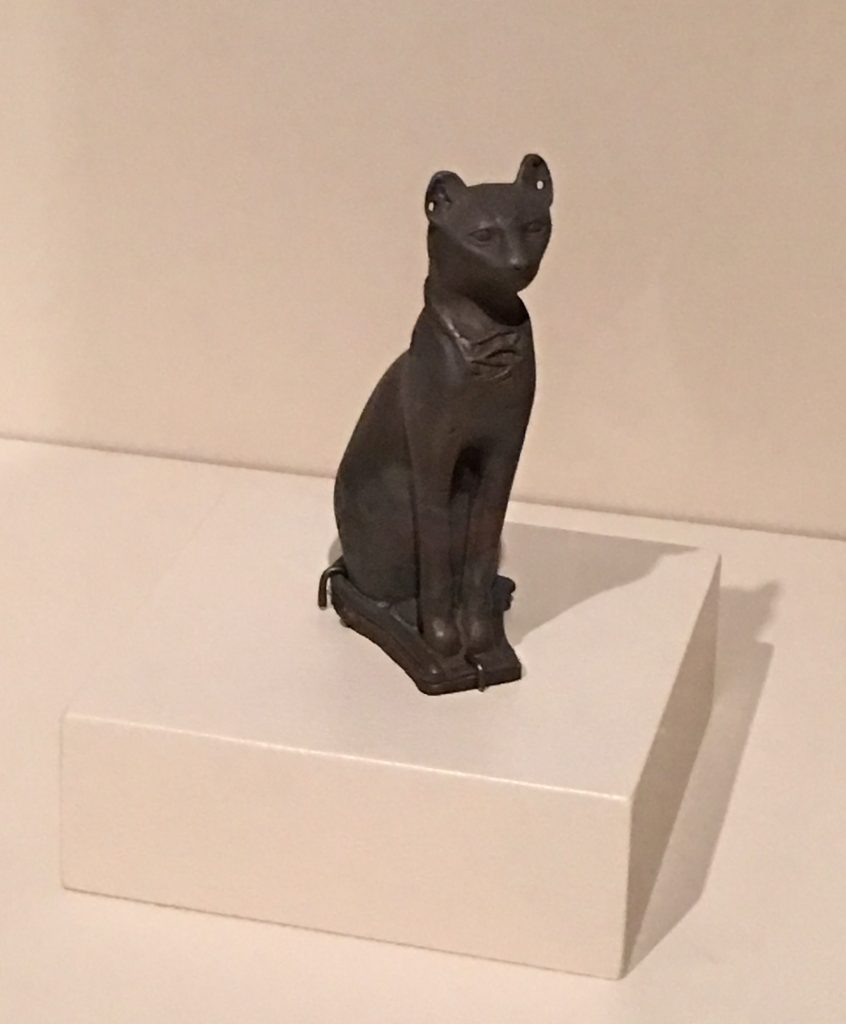
Figurine of a Cat during the Late Period Dynasty 26 – Dynasty 31, 664-332 BC or later
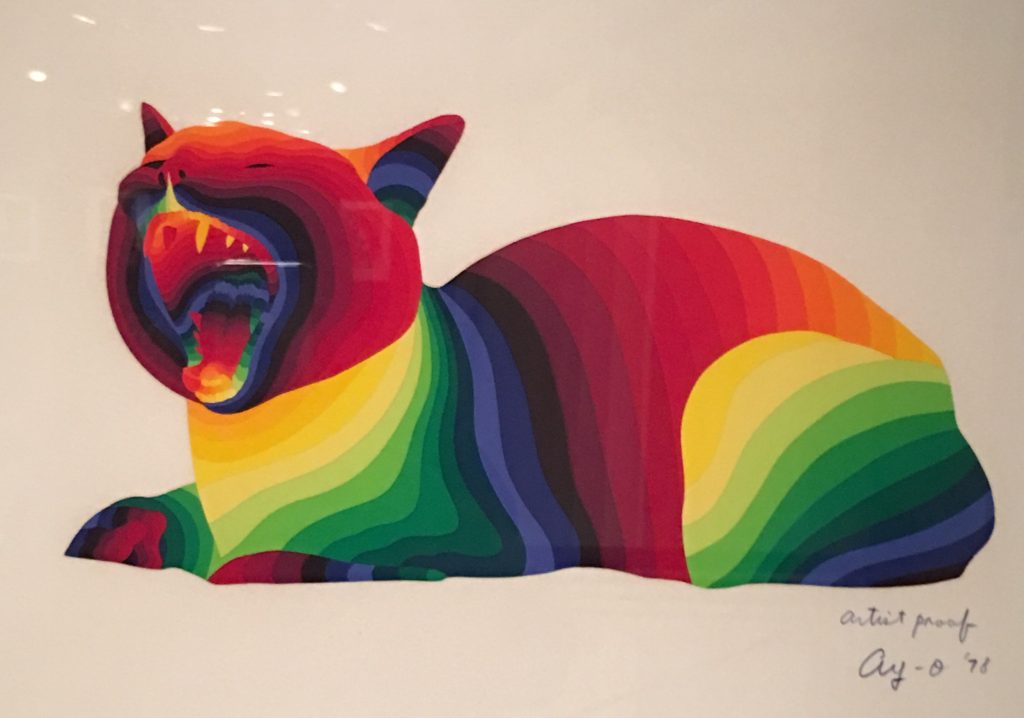
Modern Cat Exhibit
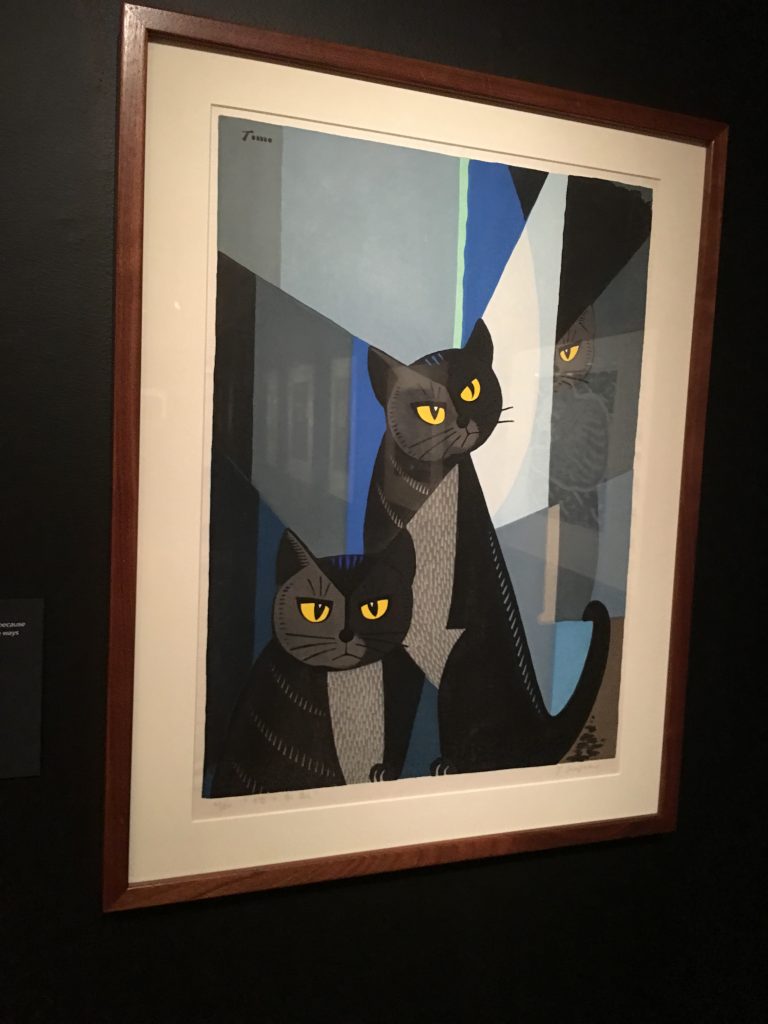
Modern Cat Exhibit
Disclosure: Please refer to our blog disclaimer tab for more information.
